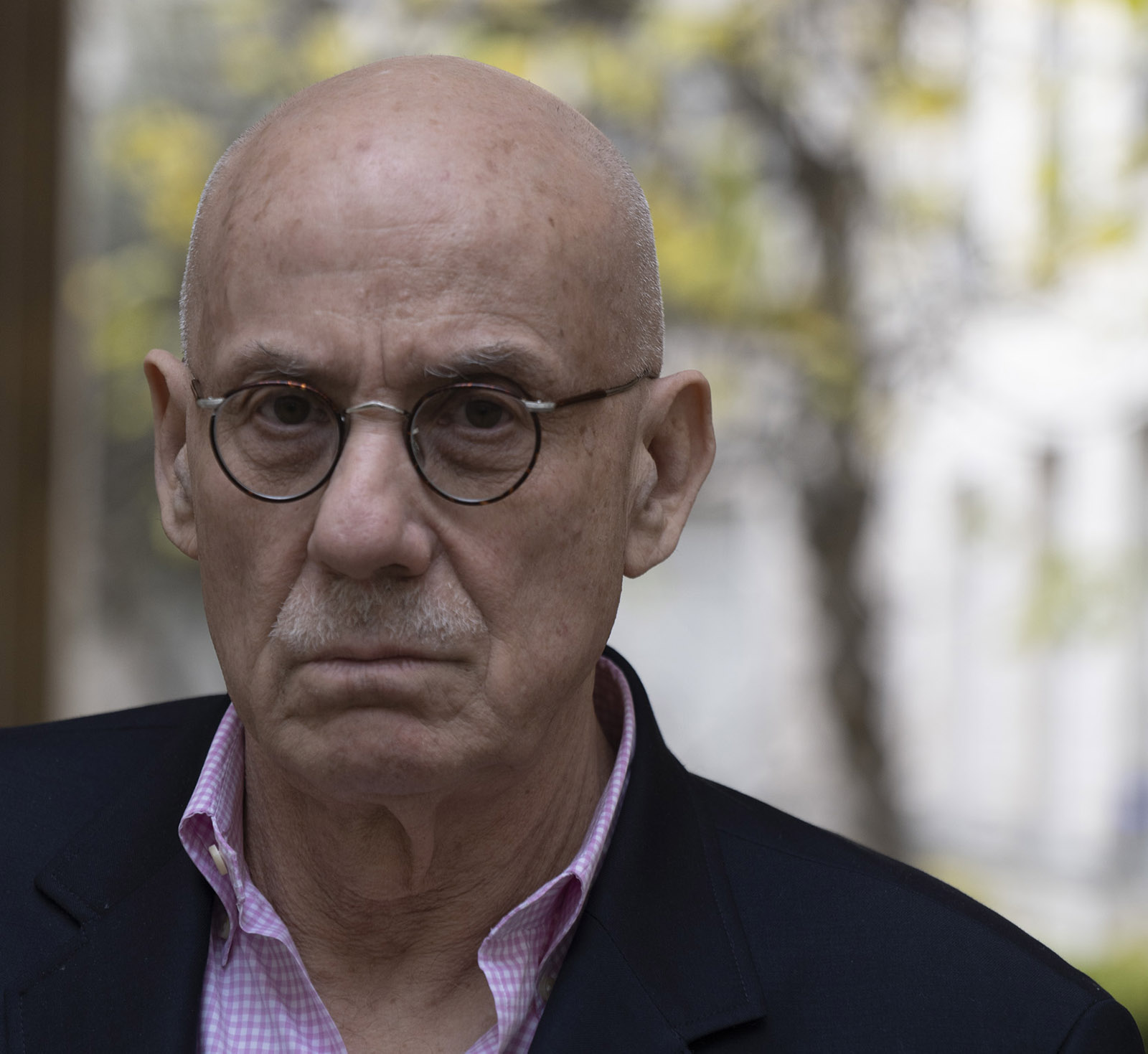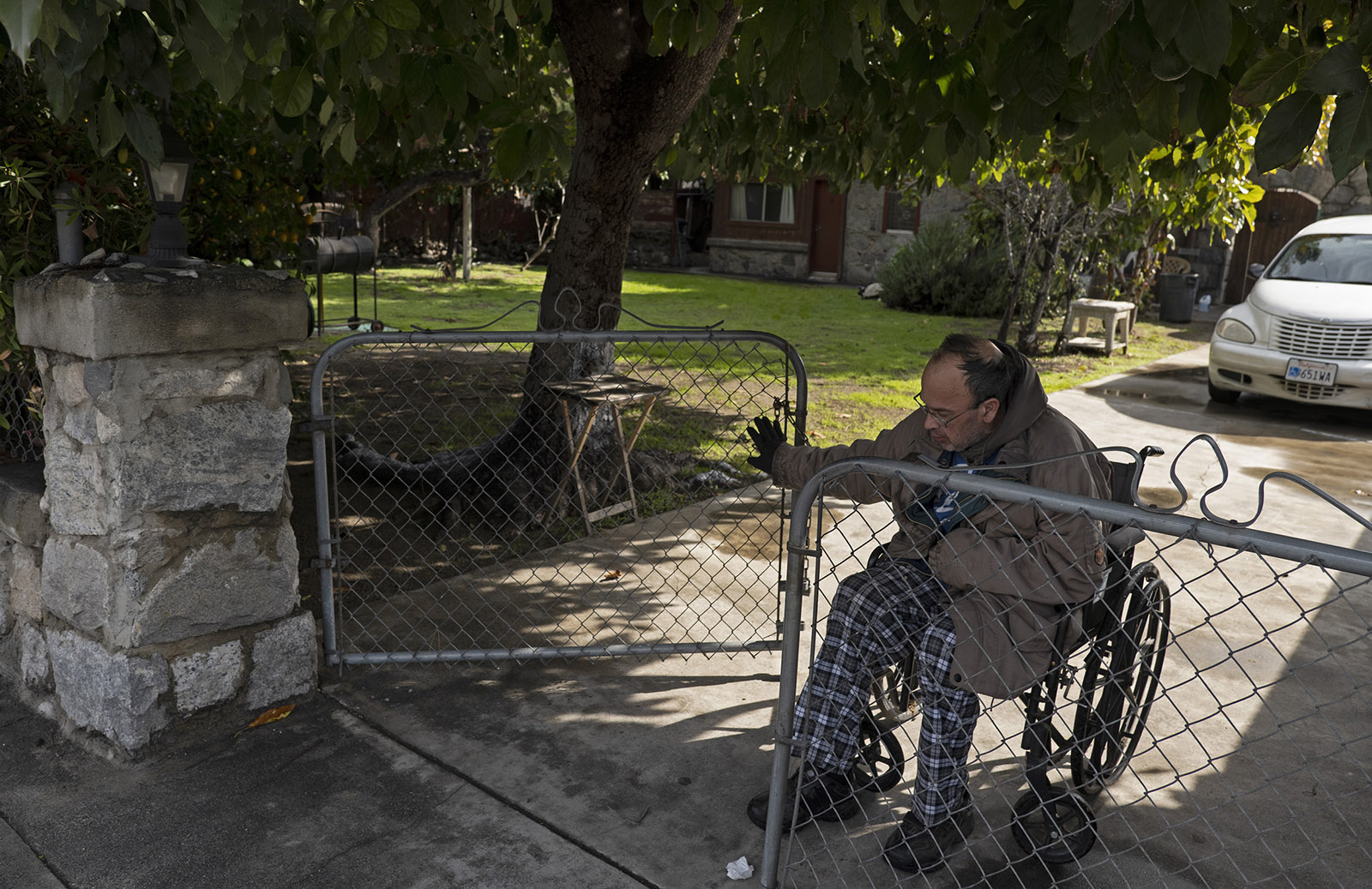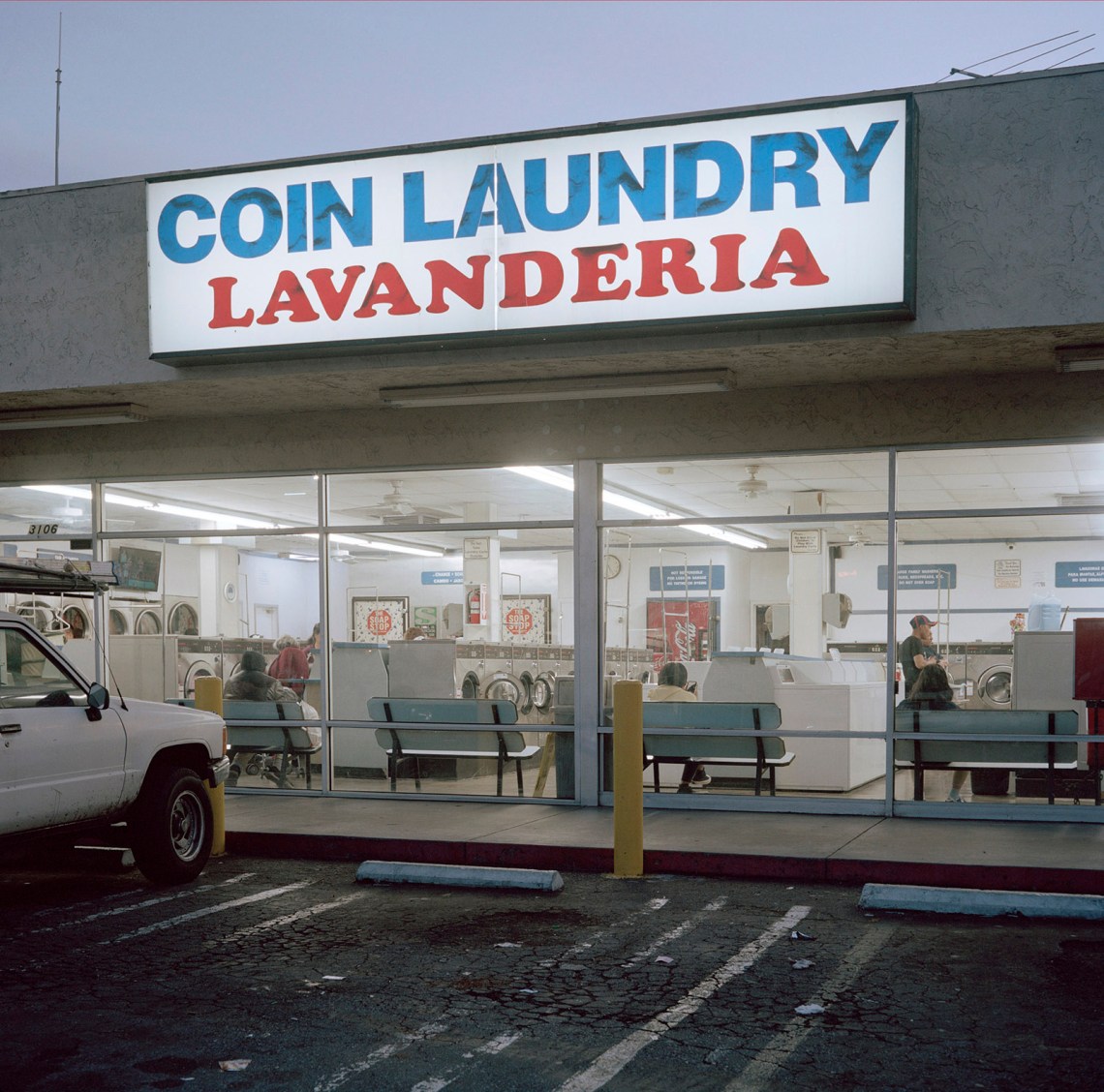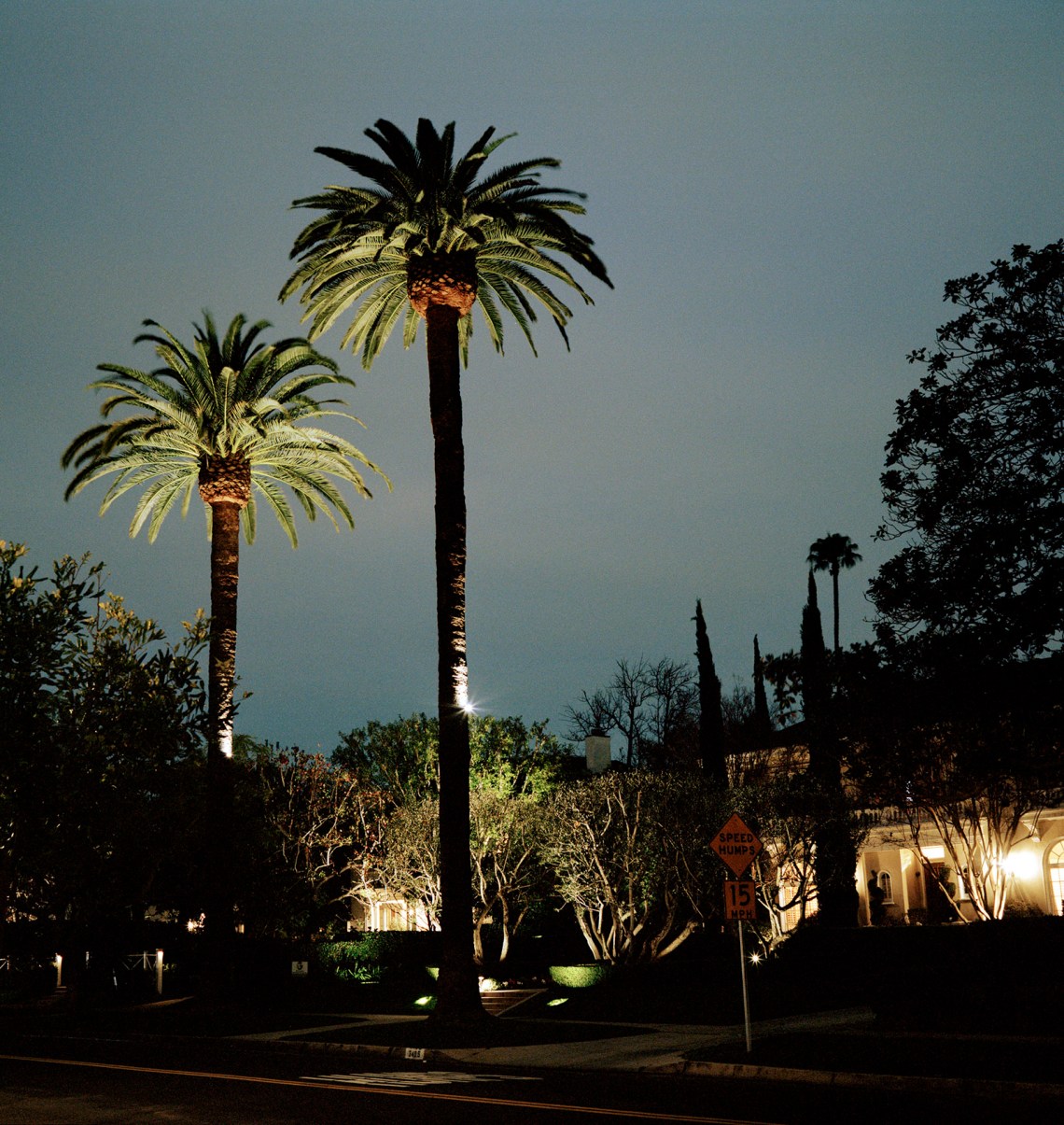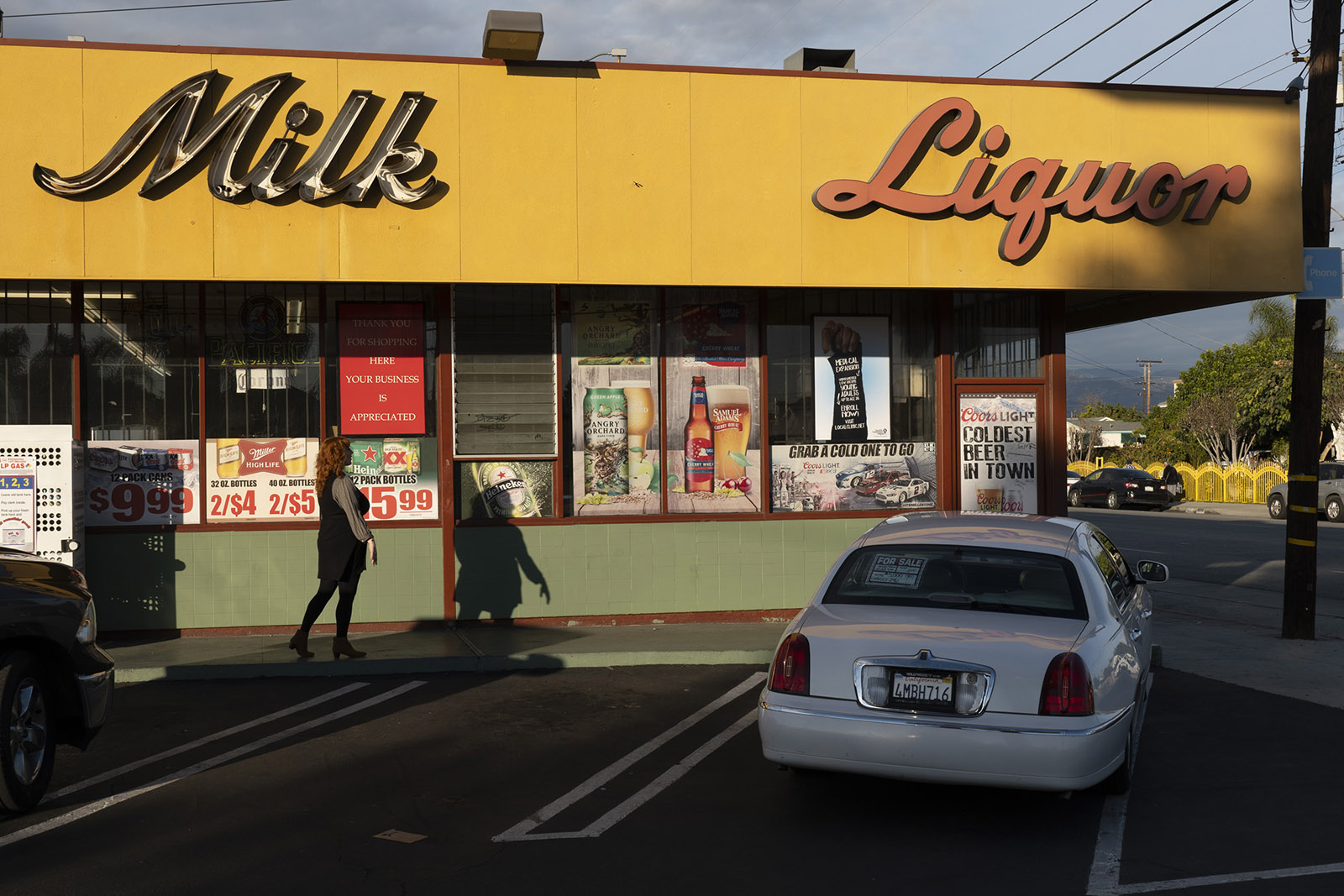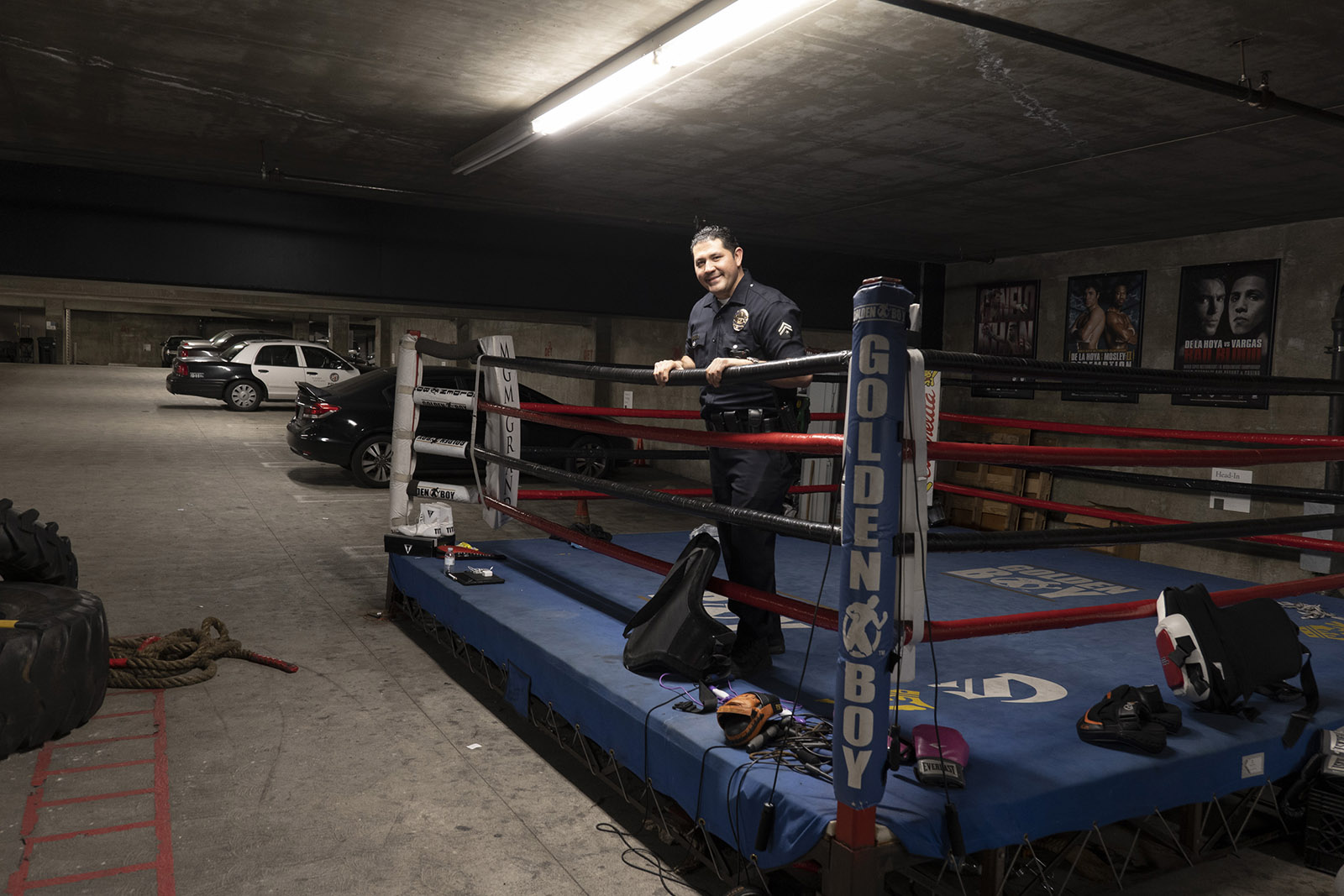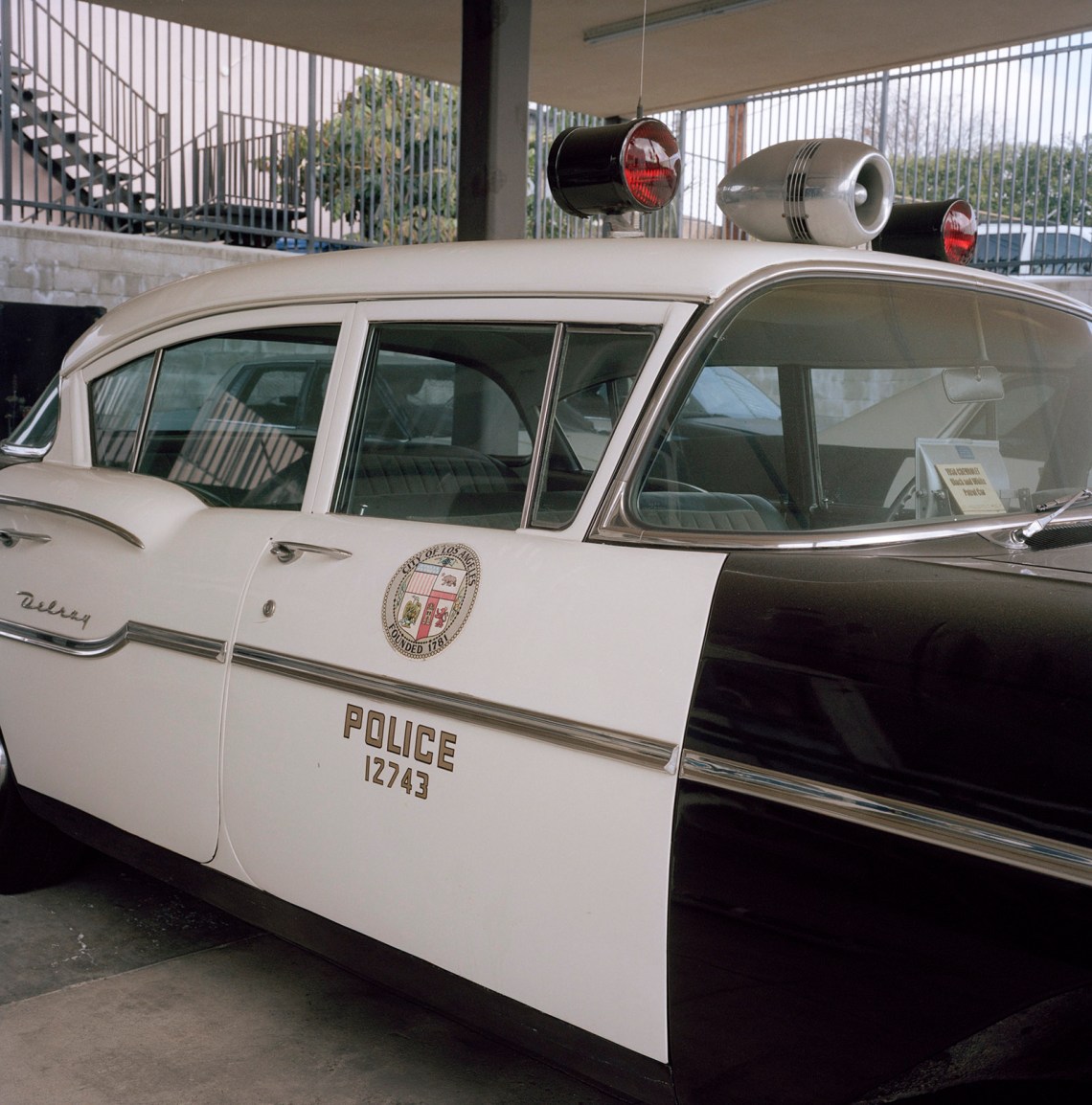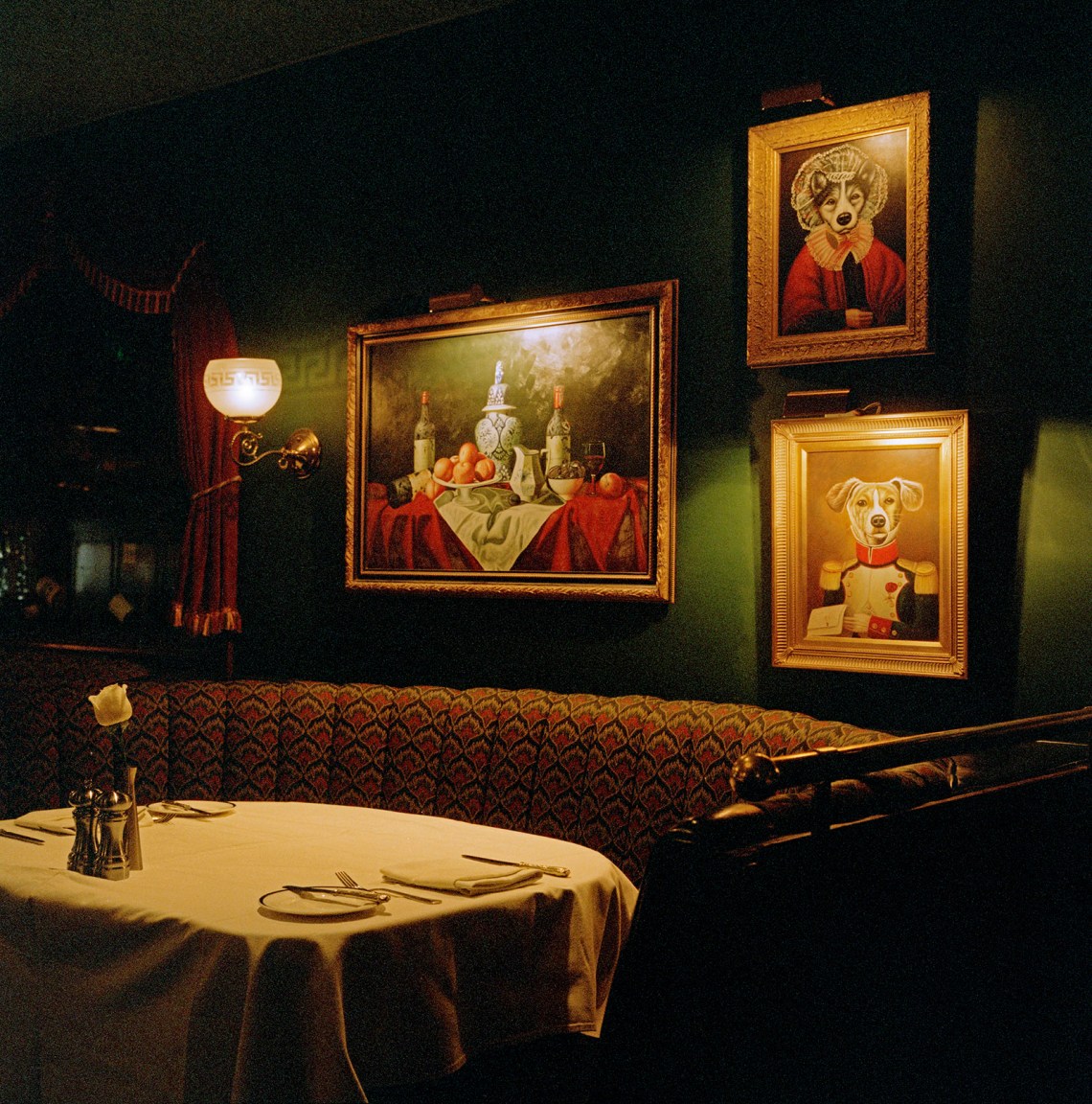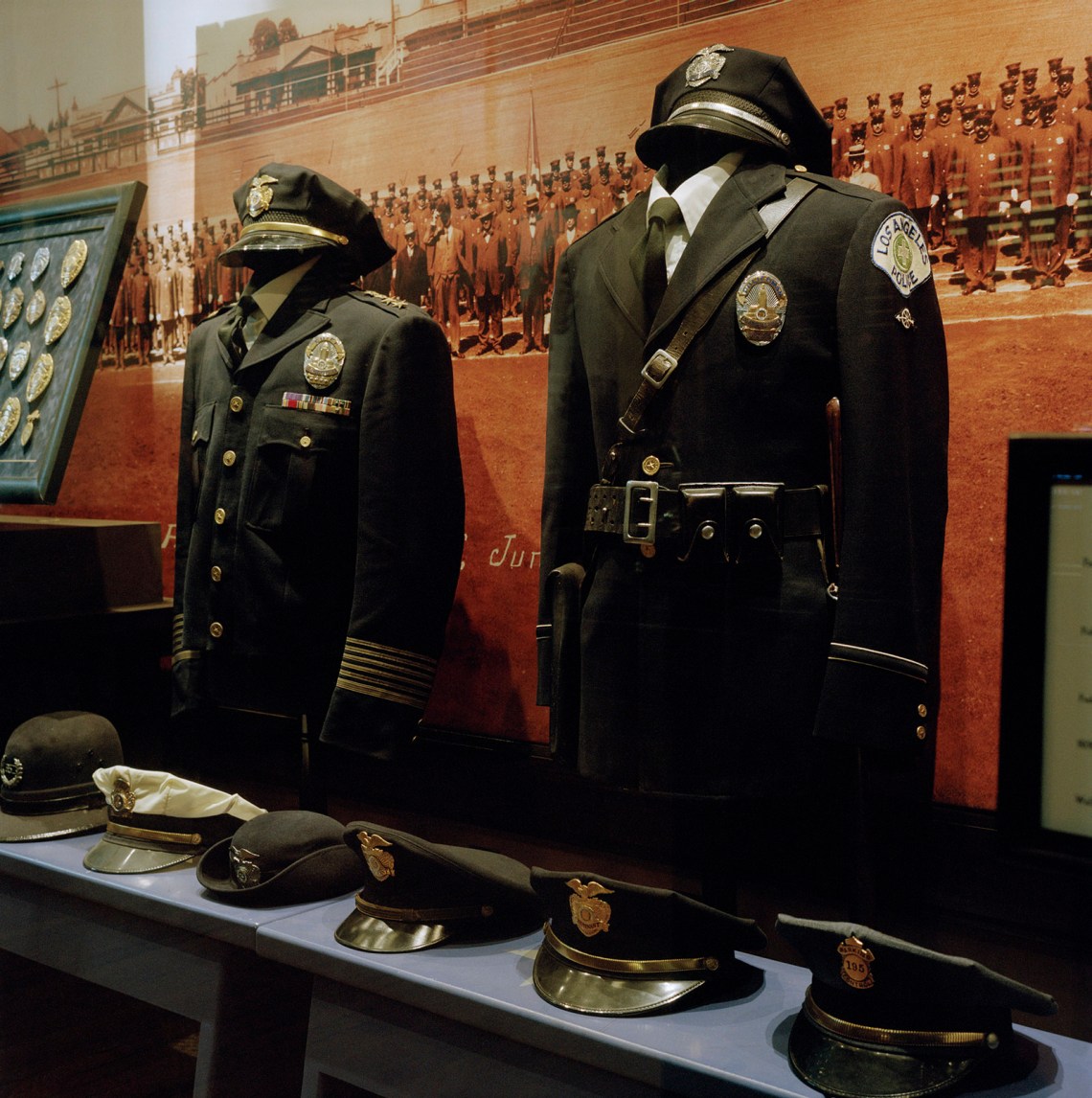“Go back to your mother!”
“I can’t. She died.” That’s the young actor James Caan, furrowed brow, playing a hitchhiker, speaking through the passenger window of a station wagon from which he’s just been ejected. From the driver’s seat, Shirley Knight aka Natalie, the strawberry-blond runaway wife in Francis Ford Coppola’s (1969) film The Rain People, replies, “I don’t care… I can hardly take care of myself.”
That confused, knitted brow might have belonged to the seventy-one-year-old crime writer James Ellroy, whose world can be condensed into two obsessions: pursuing the phantom traces of his murdered mother, and building a successful career as a writer on the foundations of a shattered childhood. The Rain People was a formative film for Ellroy, who only last year told a New York Times interviewer that, finally, he was no longer “brooding” on Shirley Knight’s Natalie.
In early February 1958, Jean Hilliker (her full married name was Geneva Hilliker Ellroy), took her young son James to live in El Monte, a town fifteen miles east of downtown Los Angeles. At the city’s edge, El Monte lies under the shadow of the San Bernadino Freeway with a panorama of the snow-capped San Gabriel mountains to the east.
To ease the transition to a new home, Hilliker, who trained as a nurse, bought James for his tenth birthday, on March 4, a beagle puppy, which he named Minna. Three months later, on Sunday afternoon June 22, James and his fifty-nine-year-old father, Armand Ellroy, rode the bus from downtown Los Angeles to El Monte. James had been staying at his dad’s for the weekend, part of the visitation arrangement in place since his parents had divorced in 1955. James preferred being at his father’s place, but had lived primarily with his mother.
At the bus terminal, Armand packed his son into a taxi and waited for the Freeway Flyer home. When the cab turned into Maple Avenue, around 6:30 PM, several police officers were waiting outside. Only then did James learn that his forty-three-year-old mother was dead. She had been strangled sometime the night before and her body dumped in an alley next to Arroyo High School, El Monte.
“Some kids found her,” said Rick Jackson, a retired LAPD homicide detective, when we met recently. He was reciting, with obvious admiration, the first sentence of Ellroy’s 1996 memoir My Dark Places, which was itself perhaps referencing Albert Camus’s deadpan opening to L’Étranger: “Maman died today. Or yesterday. I don’t know.” This marks the beginning of Ellroy’s account of his quest to uncover the truth about his mother’s murder, despite his mixed feelings toward her. “I used to hate her because my father did,” Ellroy wrote in that memoir. “I used to hate her to prove my love for him.”
Hilliker’s body, where the little leaguers had discovered it, was about five miles from where her car had been left at the Desert Inn bar on Valley Boulevard (which has since been demolished). A witness, Myrtle Mawby, saw her leaving there with a “swarthy” man at around 2 AM. Maple Avenue is about two miles equidistant from the two sites.
When I visited the Maple Avenue house in January, I met its current occupant, Gary Swain, out on the street. It was garbage collection day and Swain, who uses a wheelchair and was in his pajamas, was maneuvering a large brown plastic trash bin. Swain, now fifty-nine, has lived there since 1978. He has no connection with Ellroy but was well aware of the home’s significance for the writer.
“He [Ellroy] came here once, long ago,” Swain said. “I still feel this house is his. Maybe his mother’s spirit is here…
“If there was anything I could do to heal him,” he went on, not finishing the sentence as he struggled with the iron gate.
Ellroy was not, apparently, healed by his visit. “If I could eradicate any word in the English language,” Ellroy declared in 2001, “it would be the word ‘closure.’”
The squat brick bungalow, faced with faux stone veneer, looks little changed. Today, the yard is verdant under avocado and Meyer lemon trees, all planted by Gary’s father, Eugene. The rooms, largely unmodernized, are as Ellroy has described them in several overlapping accounts. A tiny bathroom adjoins a narrow kitchen where an open jalousie window overlooks the garden. A dun-colored linoleum floor covers half of the dark, low-ceilinged living room.
It was here, around his tenth birthday, that Jean Hilliker slapped her son in the face when he told her he wanted to live with his father. Ellroy, parroting his father, called her a drunk and a whore. “She had red hair,” noted Ellroy in a piece for GQ in 2007. “She drank Early Times bourbon and got mawkish or hellaciously pissed-off.”
Advertisement
The evening after Hilliker’s death, Armand (who had by then been interviewed and released by police) brought James and the un-house-trained puppy to Los Angeles by bus. Father, but not son, attended the funeral. Armand, in Ellroy’s later telling, was a louche layabout with eugenicist leanings who subsisted on Cheez Whiz crackers and TV dinners while badmouthing JFK or watching boxing. “He liked white fighters best,” wrote Ellroy in one account. All the same, Ellroy found his father’s neglect freeing in some respects: “He never told me that sitting in the dark was a strange thing to do.”
Armand himself did not live long. He died from a heart attack in June 1965, when James was seventeen. The trauma of losing both parents nearly led to his own early death, brought on by an addiction to Benzedrex inhaler wads washed down with root beer, cough syrup, and alcohol.
Starting in his early teens, he went on a crime spree—shoplifting, jimmying the cash boxes out of coin-operated laundry machines, and breaking into detached Colonial and Tudor-style houses in Hancock Park, where he’d sniff girls’ undergarments and steal stuff. These were the homes of school colleagues into which, after dark, Ellroy also peeped, recalling Frankenstein’s monster gazing in at “normal” family life while hiding in a Swiss woodshed: “In spite of my malignity,” the creature remarks in Mary Shelley’s account, “it softened and attracted me.” “Maybe I should grow some bolts,” Ellroy remarked after I made the allusion when we met recently in Paris. He was in France to promote his latest book, This Storm (2019).
By seventeen, Ellroy began taking odd jobs: first, kitchen work at Kentucky Fried Chicken, and later, caddying at the Hillcrest and Bel-Air country clubs. The years that followed his mother’s death scarred Ellroy the man and, at the same time, made Ellroy the writer. His work sits poised between psychic and moral chaos, including fear of relapsing into drug or alcohol dependency, and learned forms of order, such as his disciplined and methodical pre-dawn regime of writing out his fiction longhand in his home office in Denver, Colorado.
Dark rooms. Beethoven. Dogs. Red-haired women. Oedipal fantasies. These memories and constituent parts of childhood became the baggage Ellroy carried into his new adopted family: the fraternity of detectives. “I very simply gave my heart to the police officers on the occasion of my mother’s death,” Ellroy told me. He never took it back. It lives and breathes in the friendships he enjoys with cops and in the avatars he created in his fiction, from The Black Dahlia (1987) to the recent novels Perfidia (2014) and This Storm. The discipline of writing, from age thirty, became a lifejacket that kept Ellroy afloat above the tide of decrepitude that shaped his early years.
There were periods of homelessness. The summer of 1968 found him sleeping out in Robert Burns Park in LA, with a bust of Beethoven for company. When the weather turned that year, the twenty-year-old Ellroy moved into an abandoned house. A few weeks later, four cops kicked the door in and arrested him for suspected burglary. Fortunately, one of the detectives intervened to reduce the rap to trespassing.
In his various memoirs, including My Dark Places and the GQ essays compiled as Destination: Morgue! (2004), Ellroy emphasizes his bad-boy behavior and the time he spent in county jail or on probation. He was always a reader, though—reciting for me the last two paragraphs of James M. Cain’s The Postman Always Rings Twice from memory. Much of his adolescence, he told me, was spent devouring crime fiction in public libraries, losing himself in the ordered world of crime-solving—from the revered Jack Webb (a copy of The Badge was an eleventh birthday gift from his father), to Joseph Wambaugh, Mickey Spillane and Dashiell Hammett. He took his father’s homophobia and red-baiting and, with a dash of Spillane’s misanthropic Mike Hammer, molded them into his own youthful persona. In the year his father died, Ellroy was expelled from the predominantly Jewish Fairfax High School—by one of his accounts, for singing the Horst Wessel song at a school folk club meeting.
In 1973, Ellroy was drawn to a woman named Marcia Sidwell. They met in a coin laundromat off Beverly Boulevard. She was a registered nurse with reddish blond hair and became, for Ellroy, a maternal helpmeet who listened: “I was a pathetic sack of shit then,” Ellroy told me. When, after three meetings, she failed to reappear, Ellroy spent six months looking for her. Why? “I just had to say thank you. She was kind to me at a moment when nobody else was, and she was a good-looking woman.”
Advertisement
“Chercher la femme” has remained a leitmotif of Ellroy’s life. Things slowly improved after 1977, when he got sober, but after a nervous breakdown in 2001, he reportedly became addicted to sedatives and sleeping pills. “I will always be a drug addict who doesn’t use drugs,” he told me in Paris. “I’ll always be an alcoholic who doesn’t drink.”
*
“The compulsion to repeat,” to use Freud’s phrase, may be a hallmark of Ellroy’s prose. At times, it can lead him into what The Irish Times once described unflatteringly as “alliterative waffle.” Extensive references to dogs and wolves in recent novels with no obvious canine theme also appear; Ellroy often refers to himself as “Demon Dog.” Where repetition grows more interesting is in Ellroy’s obsession with red-headed women reminiscent of his mother.
“I write stories to console her as a phantom,” writes Ellroy in The Hilliker Curse (2010). The ghost of Ellroy’s mother shape-shifts into his characters—as the tall red-headed registered nurse from Tunnel City, Wisconsin (Ellroy’s mother’s hometown), Joan Conville—a character in both Perfidia and This Storm who is, Ellroy told me, “certainly a stand-in for my mother.” In Perfidia, the phantom morphs into the unpredictably violent, “hellaciously pissed-off,” auburn-haired Kay Lake.
The 1960s drama series The Fugitive, the story of a doctor’s quest to clear his name of his wife’s murder, was another source of inspiration for Ellroy (Shirley Knight appeared in several episodes of the show, also). “These are the women in my books,” enthused Ellroy. “They’re wary. They’re hungry. They’re looking for love. They’re looking for sex.” He wished, he told me, that Sarah Miles, a redheaded actress who starred in the romantic drama Ryan’s Daughter (1970), could in another era have played Kay Lake, rather than Scarlett Johansson, whom Brian De Palma chose for the role in the 2006 movie adaptation of The Black Dahlia.
The LA-based crime writer Michael Connelly told me that he had Ellroy’s personal story in mind in 1994 when he was working on his Harry Bosch mystery The Last Coyote. Out of consideration, he wrote to Ellroy signaling his intention. His phone rang a few days later, at 4 AM. It was Ellroy, in Kansas City, wishing Connelly luck: “I don’t have a franchise on murdered mothers.”
“The novel is autobiography mislabelled,” according to Ellroy, and in at least two instances in his fiction, he has created full-fledged avatars of himself, albeit set back in time, in an earlier era of LA and Hollywood. Dudley Smith, a police sergeant who becomes a wartime army officer, is first introduced in Clandestine (1982), and appears in four more novels, including LA Confidential (1997), Perfidia and This Storm. This is Ellroy as bad cop. Described as tall, lanky, and intimidating, with small brown eyes, Smith carries buckshot-stitched sap gloves and knuckle dusters. He’s a Hammer-like right-winger with a pit-dog (Ellroy once had a pit-bull named Dudley). “There’s a way that certain men behave with animals,” the narrator in Perfidia comments while observing Smith the detective. “They regress in a certain way.”
Avatar number two is “Bucky” Bleichert—Ellroy as good cop and sometime lover of the auburn-haired seductress Kay Lake from The Black Dahlia. Bucky appears in that novel as a homicide detective and pugilist, who takes part in a notably bloody bout with another detective. In another boxing match, this time in Perfidia, Bucky “raised a glove to salute his dead mother in heaven.” Ellroy’s love of boxing led him to write a piece for GQ in 2000 about a Mexican boxing showdown in Las Vegas, “Bloodsport.”
Ellroy’s novelized account of Bleichert’s search for the unknown killer of Elizabeth Short, the woman whose real-life brutal murder in 1947 gave rise to the noirish nickname “the Black Dahlia,” brings to mind both another such fictional quest, that of Finis Brown in Webb’s The Badge, and Ellroy’s own actual hunt for his mother’s killer. In Ellroy’s novel, the narratives become intertwined—as Ellroy describes it in My Dark Places, Elizabeth Short “was the redhead [that is, Jean Hilliker] transmogrified.”
Some have questioned Ellroy’s obsessiveness in his seemingly endless pursuit. “It’s a disappointing ending,” Maggie Nelson, author of The Red Parts, writes of My Dark Places. “Not because the case doesn’t get solved, but because Ellroy never seems to grasp the futility of his enterprise. Instead, his compulsion to learn more just smashes up against this futility with increasing velocity.”
Ellroy seems unwilling, or unable, to lay to rest the events of 1958. He sets his fiction further into the past, at a time when quotidian racial and homophobic abuse and routine police brutality might appear less out of place. Although Ellroy once wrote an article opposing capital punishment in one specific case, his view on the subject generally has hardened: “I support the death penalty, and vigorously. I think that it’s used all too seldom.”
In 1991, Michael Connelly was an LA Times crime reporter recently arrived from Florida. His beat included the area where Rodney King was kicked and struck fifty-six times with batons. The two crime writers view the same event very differently. As Connelly told me, “at the time the police force was an occupying army led by General Gates, who was uncouth in his inability to connect with minority communities. I don’t think anyone would say it [the beating] was misinterpreted [by the media].” Ellroy claims that it was: “If you see the entire three minutes… it looks like a by-the-book interdiction of a violent suspect. If you look at the fifty-six seconds that were co-opted and shown endlessly on TV, then it is something else entirely.”
In fact, according to Time magazine in 2016, the complete amateur footage is just eighty-one seconds long. It shows an egregious act of police brutality. It is hard to see how anyone could consider this beating a legitimate and proportionate use of force to subdue a suspect. The charitable explanation for Ellroy’s account is that his over-identification with LAPD detectives makes him a far from impartial observer.
I put to Ellroy the arguments of those who find his apparent prejudices troubling, such as by Mike Davis, an emeritus professor at the University of California Riverside and the author of City of Quartz. “Oh, that cocksucker—he hates me,” Ellroy shot back. “He has called me a fascist, racist, anti-Semite, but so have other people. It happens.”
When I asked Ellroy about any prejudices he may still hold, he evaded the question. In an interview with The Economist’s 1843 magazine last year, Ellroy appeared to distance himself from anti-Semitic statements he’d once made. “People have a tendency to use today’s optics to review events that are deep in the past and rarely do they hold up,” argues Glynn Martin, a former narcotics detective and a friend of Ellroy’s, who oversees the Los Angeles Police Memorial Foundation.
If, during book tours, Ellroy sometimes plays the provocateur—a “buffoon,” in his own word—in private, he is urbane and generous. He donated all his French royalties for the year 2015 to victims of the Bataclan terror attacks in Paris. The French newspaper Le Monde, which published this fact, called Ellroy “un homme pétri de contradictions” (a man full of contradictions). Ellroy has also participated in various publishing projects, including at least two with Glynn Martin, to raise money for the LAPD’s museum.
Senior police officers I spoke to—male ones, at any rate—describe Ellroy as “brilliant,” “a genius.” There is a scene in the 2001 documentary James Ellroy’s Feast of Death that shows the writer sitting among a group of LAPD colleagues in the Pacific Dining Car in downtown LA. The retired detective Rick Jackson pins a replica police badge onto Ellroy’s sweater; the writer beams with joy. Ellroy liked to call such gatherings at the diner where he was a regular for years “dog-pack dinners.” They would talk crime, and with some encouragement, Ellroy would do his buffoon act: howling like a dog and panting if he spotted a redheaded woman come in.
“He liked to be called El Perro” (The Dog), Adolfo Jáuregui García, the diner’s manager told me. A painting of a Jack Russell terrier wearing Napoleon’s dress uniform, and another of a wolf in a grandmother’s bonnet, hang next to what used to be Ellroy’s table, unvisited since he moved to Denver, in 2015, to be with Helen Knode. “Where did he go?” asked Adolfo. “We miss him.”
While I was in LA, I attended a news conference led by the city’s mayor, Eric Garcetti, and police chief Michel Moore, downtown at the Public Administration Building. The banner headline was that homicides were down, at their lowest since 1966. Crime is coming down, the LAPD claims, through community outreach or “relation-based policing.” And the force says that it’s addressing the department’s past lack of diversity by actively recruiting women and African Americans. Ellroy may be looking backward, but Los Angeles is looking forward.
On the fifth floor of the building is the homicide “war room,” where major cases are handled. It’s not the mission statement of Garcetti or Moore that boldly faces out from the wall above a flat-screen TV, but that of a fictional detective. But it’s not a mantra from one of Ellroy’s characters; it’s Michael Connelly’s Harry Bosch: “EVERYBODY COUNTS OR NOBODY COUNTS.”


